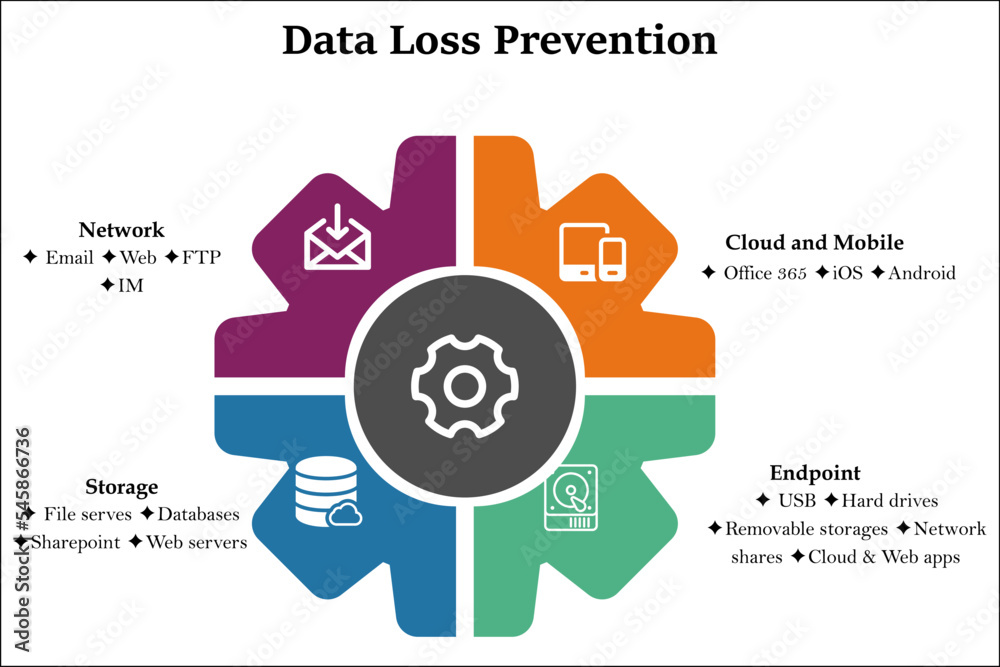Imagine losing sensitive company data – customer credit card numbers, proprietary research, confidential emails – not through a direct hack, but because it’s flowing freely and unprotected across your network. Scary, right? That’s the daily reality for organizations struggling with network data loss prevention (network DLP).
But what exactly is it? Simply put, network DLP is your last line of defense, a set of technologies and procedures designed to detect and prevent sensitive data from leaving your network boundaries without authorization. In an era of increasing data breaches and stricter compliance regulations, effectively implementing network DLP is no longer optional; it’s a business imperative.
In this article, we’ll delve into the core concepts of network DLP, explore the common challenges organizations face, and uncover practical strategies for building a robust defense against data leaks, keeping your sensitive information safe and sound.
Network Data Loss Prevention: Shielding Your Digital Assets
Understanding Network DLP and Its Crucial Role
Network Data Loss Prevention (DLP) is your virtual gatekeeper, vigilantly guarding sensitive data as it travels across your network. Think of it as a digital security system for your organization’s information.
Its core job is to prevent confidential information from leaking out of your network unintentionally or maliciously. It scans network traffic for sensitive content.
This includes emails, file transfers, web browsing, and any other data transmitted via your network. DLP systems recognize patterns associated with sensitive information.
This includes credit card numbers, social security numbers, or proprietary business data. When such data is detected, the DLP system can take predefined actions.
These actions include blocking the transmission, alerting administrators, or encrypting the data. Network DLP becomes indispensable, offering businesses enhanced security.
It helps to maintain compliance, safeguard their reputation, and also preserve customer trust within a continuously evolving threat landscape.
How Network DLP Works: A Deep Dive
Network DLP solutions operate by inspecting network traffic in real-time. It uses various techniques to identify sensitive data as it moves.
These techniques include pattern matching, keyword analysis, dictionary lookups, and data fingerprinting. Pattern matching helps identify data following a specific format.
Consider, for instance, credit card numbers or social security numbers, where there’s a specific structure to follow. Keyword analysis involves scanning the data for specified terms.
Keywords like “confidential,” “proprietary,” or “secret” can flag potentially sensitive data. Dictionary lookups cross-reference the data against predefined lists.
The lists will contain sensitive terms or phrases. Data fingerprinting creates a unique digital signature, also known as a ‘fingerprint’, of sensitive documents.
When a document matches the fingerprint, the system knows that sensitive information is being transmitted. The solutions then take actions based on policies.
Key Benefits of Implementing Network DLP

Implementing Network DLP offers a multitude of advantages for organizations across all industries. A crucial advantage is the prevention of data breaches.
DLP systems actively monitor network traffic to identify and block sensitive data leaks. This minimizes the risk of costly breaches.
Another primary advantage is compliance with regulations. Many industries are governed by strict data protection laws.
DLP helps organizations comply with regulations such as GDPR, HIPAA, and PCI DSS. These are some of the top regulatory compliance requirements.
It provides the tools to enforce data handling policies. This helps maintain a standard for data handling. This reduces the risk of fines and penalties.
Implementing DLP also helps to improve data visibility. It offers insights into how sensitive data is used and transmitted across the network.
Choosing the Right Network DLP Solution: Important Considerations
Selecting the best Network DLP solution requires careful consideration of an organization’s unique needs. Consider the types of sensitive data you need to protect.
Different solutions offer varying capabilities for detecting and protecting different data types. Also assess your organization’s network infrastructure and architecture.
Ensure the DLP solution is compatible with your existing network environment. It should also be able to seamlessly integrate into it.
Consider the deployment options offered by different solutions, such as on-premises, cloud-based, or hybrid. On-premises solutions can provide more control.
Cloud-based solutions offer greater scalability and flexibility. Hybrid solutions combine the benefits of both.
Look for solutions that offer granular policy controls. This is crucial for configuring rules based on specific data types, users, and applications.
Best Practices for Effective Network DLP Deployment
Effective Network DLP deployment requires thoughtful planning and execution. Begin with a comprehensive data discovery exercise to identify your sensitive data.
Data discovery is essential to know what information needs protection. Develop a clear and concise data protection policy.
The data protection policy defines what data is considered sensitive. It should also detail how that data should be handled and protected.
Implement a phased deployment approach, starting with a pilot project. This allows you to test and fine-tune policies before rolling out the solution across the entire network.
Regularly monitor and review DLP policies. DLP is only as good as the policies it is set up with.
Provide ongoing training and awareness programs for employees. Training will keep employees on top of data protection practices.